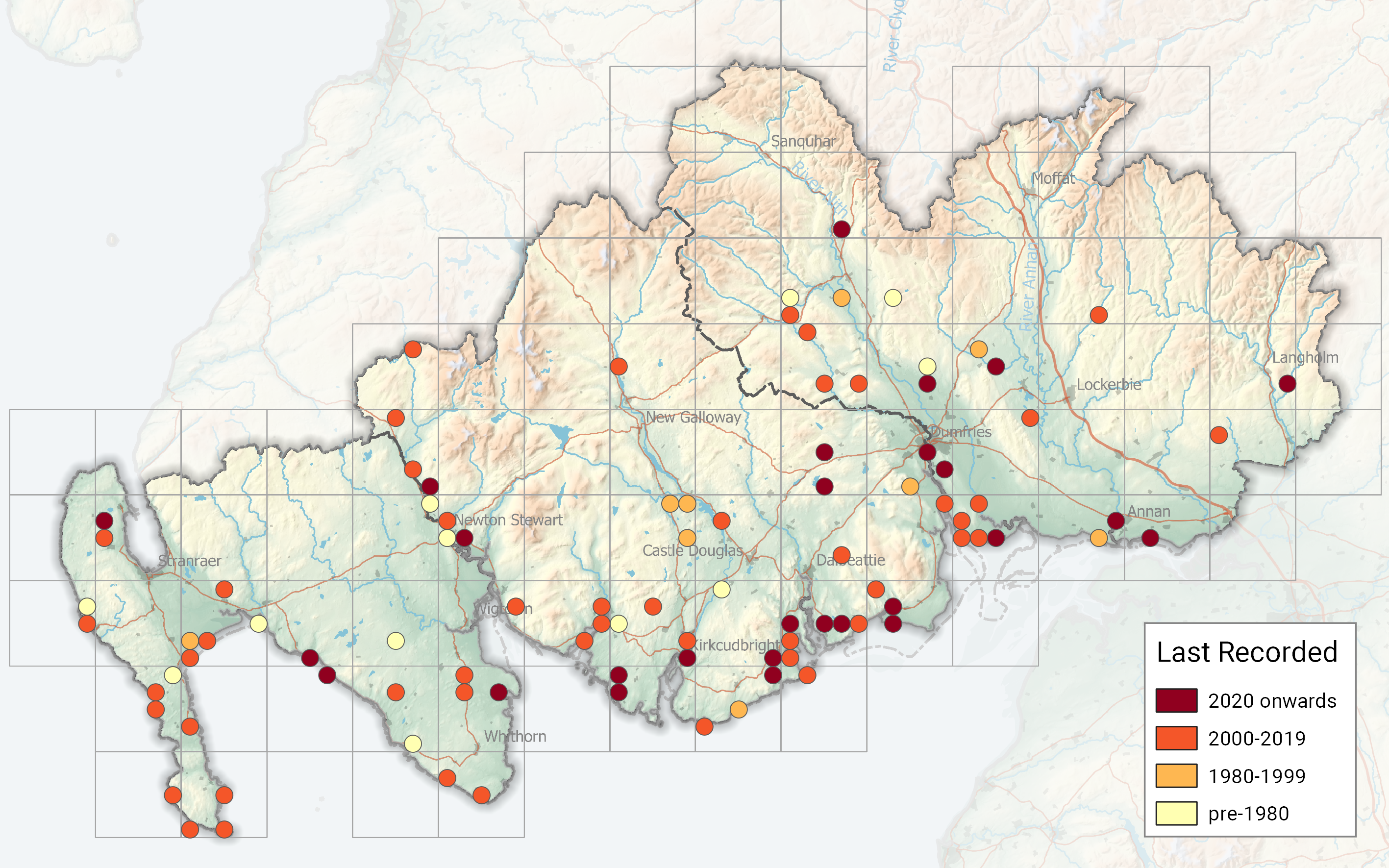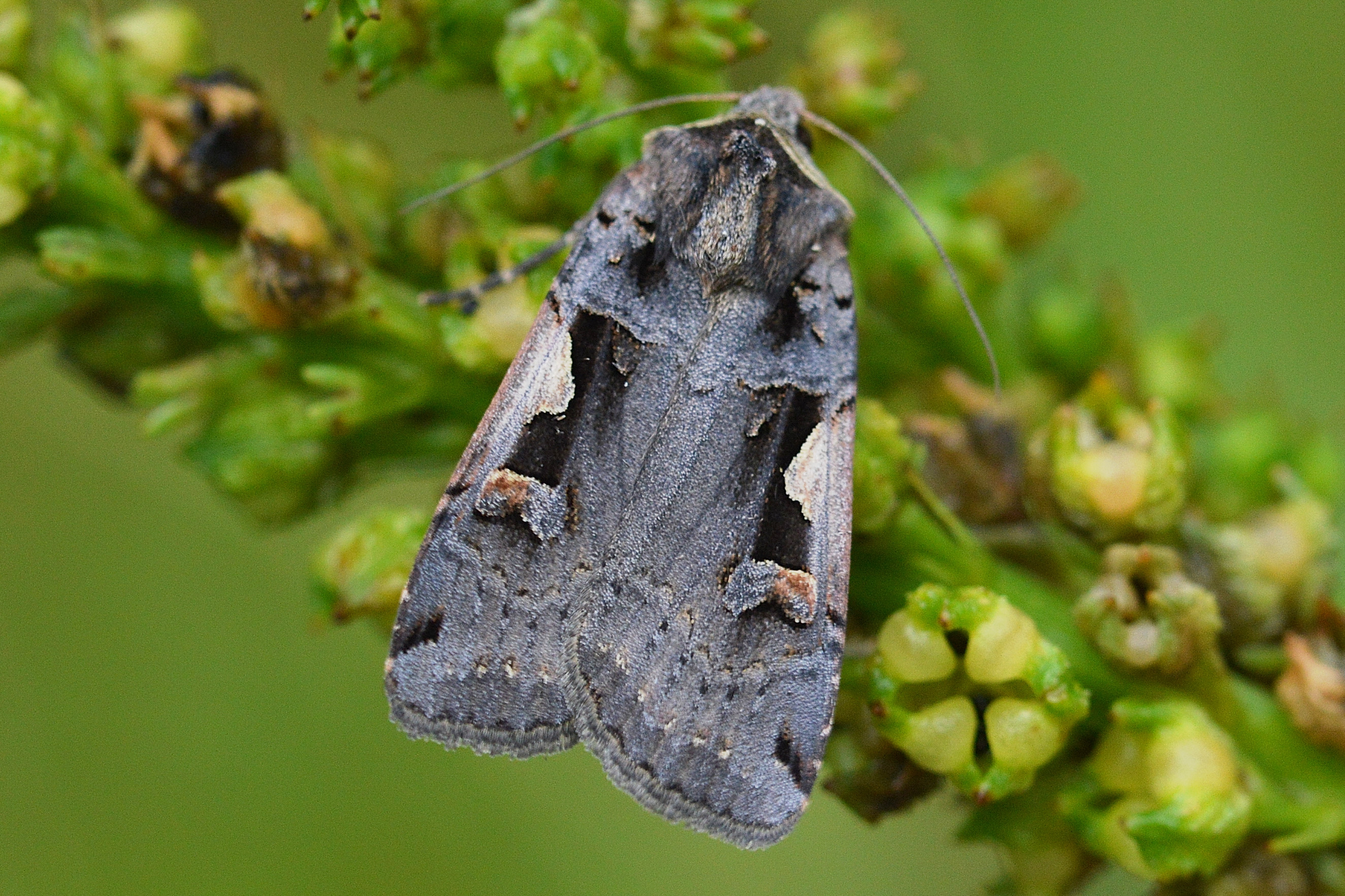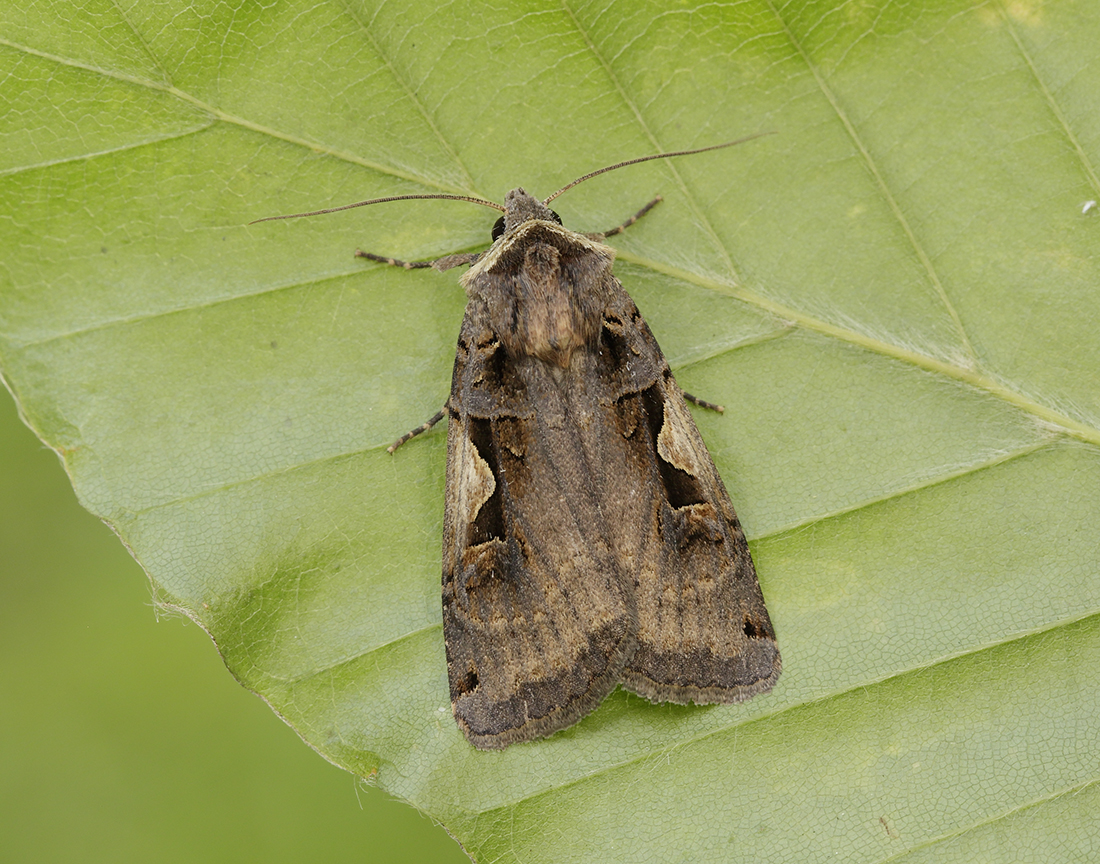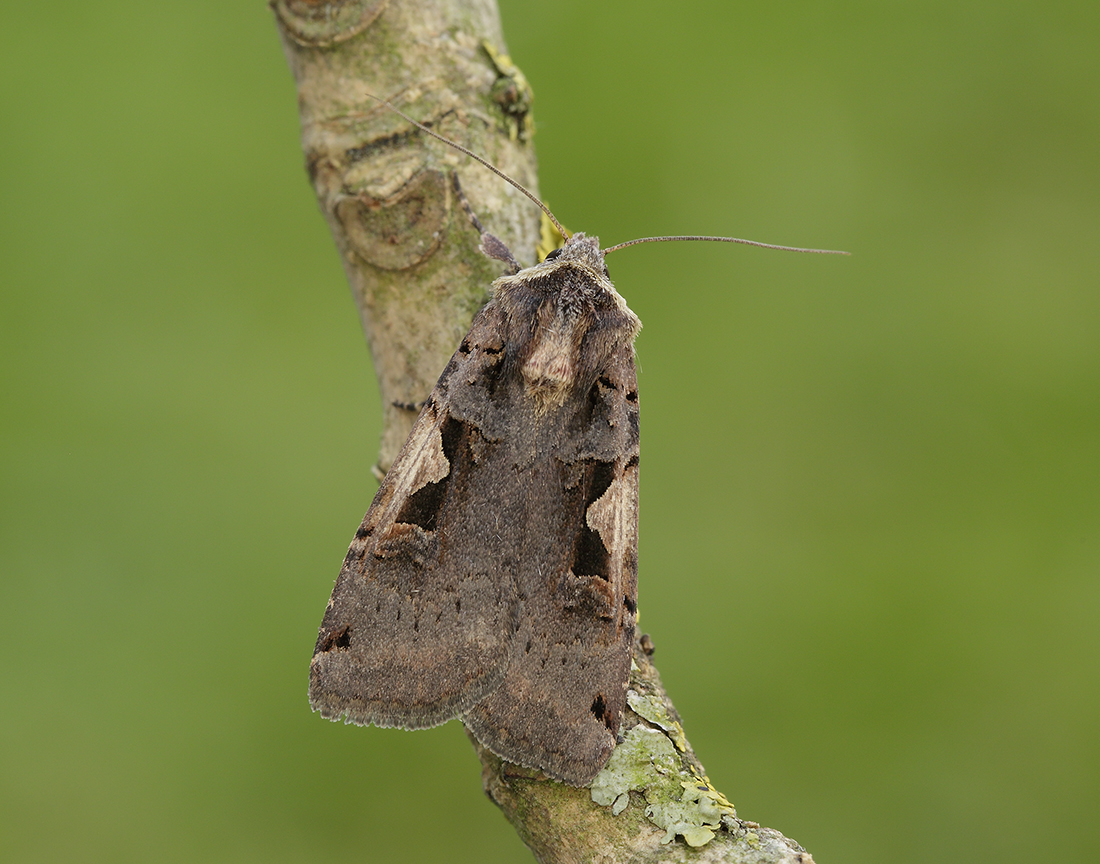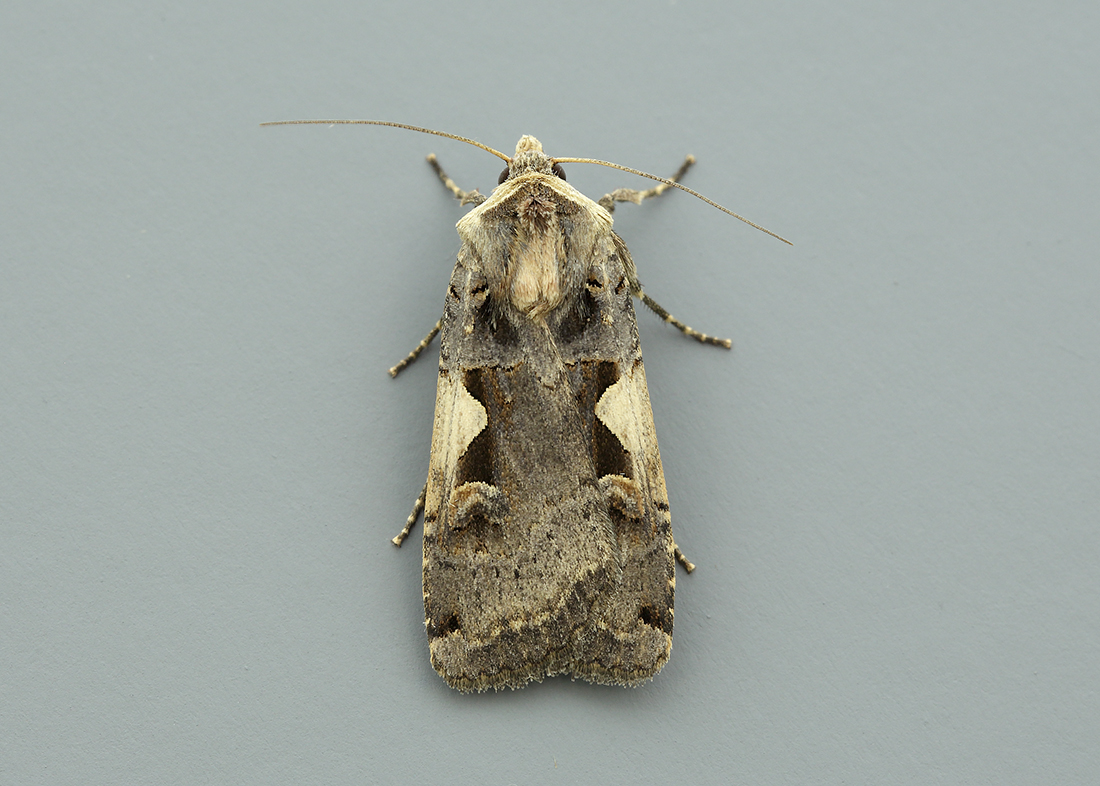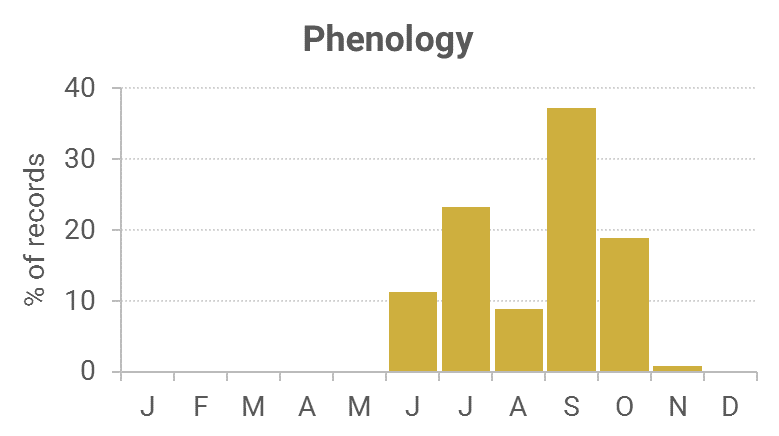Identification
The straw-coloured blotch in the centre of the forewing adjacent to the costa, contrasting with an adjacent black saddle black saddle is diagnostic.
Recording Method
Attracted to light, sometimes in large numbers. Also feeds at sugar and flowers.
Life cycle
Two overlapping generations. Larvae are present June and July, and then overwinters as a larva from September to April.
Larval foodplants
A wide range of herbaceous plants including nettles, burdocks and willowherbs.
Habitat
A wide variety of lowland areas including woodland and gardens.
History
K. J. Morton of Edinburgh (1900) while on a visit in July 1899 to Wigtownshire had found this species in the Monreith area. Gordon (1913) had found it generally distributed, being often common at sugar in woods around Corsemalzie. He also found it on ragwort on Glenluce golf course 26th July 1905. Earliest date was 18th June 1899.
William Evans received specimens from Mowat, the Killantringan lighthouse keeper during 1914 to aid his insect migration studies.
Sir Arthur Duncan (1909-84) during his lifetime had found it at Closeburn, Tynron and Castlehill, Dumfries (all VC72) and Southerness and Colvend (VC73).
During 1975-87 there were twenty-five records from all of the Rothamsted stations proving it to be widespread.
From 1981 to 2010 there were 120 records with Kirkton and Old Torr providing a good portion of them, the rest from widely scattered sites not too far from the coast.

